2023 Spring Visual Arts Preview
By • February 8, 2023 0 1741
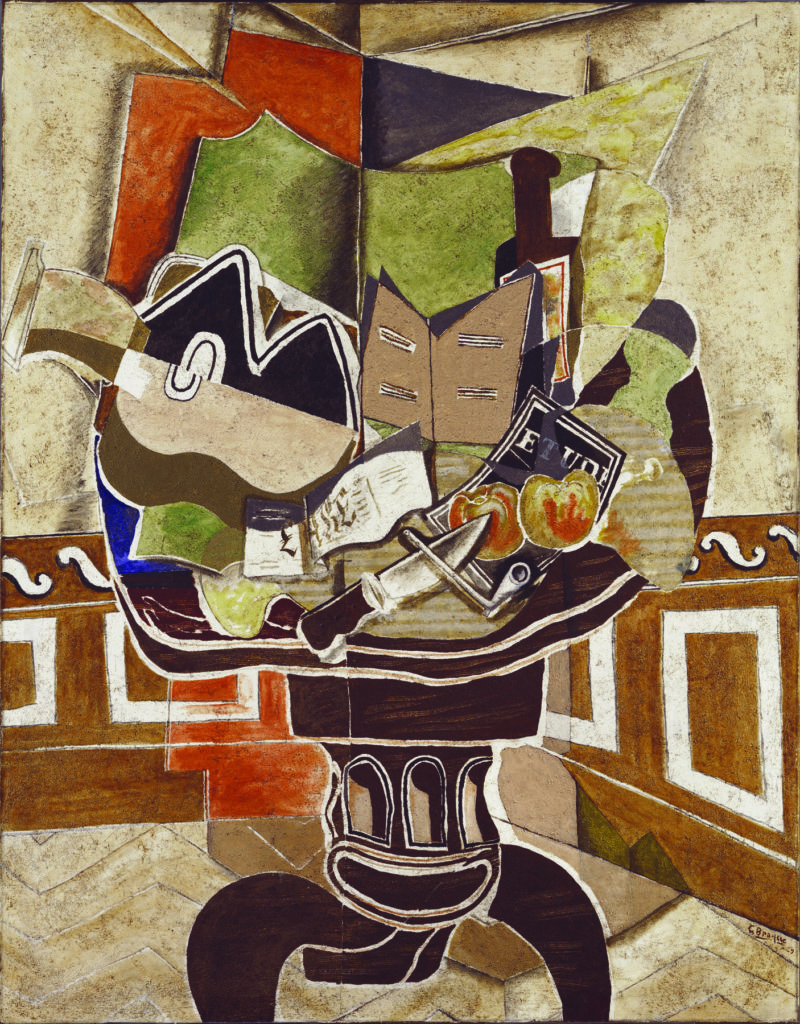
Pour, Tear, Carve
The Phillips Collection
March 18 to May 14
“Pour, Tear, Carve” explores the role that materials and application in art can play in evoking personal memories, conveying time and place and stimulating the senses. What types of materials and techniques do artists use, and how do these decisions shape the subject, composition, style and meaning of a work of art? Georges Braque incorporated sand into his paintings to create spatial tensions, while Joan Mitchell poured and twisted paint over large canvases to suggest movement and a sense of place. Dindga McCannon and Sanford Biggers repurpose torn fabrics and textiles into extraordinary quilted objects. Simone Leigh carves terracotta to traverse links between the past and present. The experiments of Alfonso Ossorio, who affixed bones, jewelry and mirror shards to panels, and Leo Villareal, who creates complex, rhythmic LED compositions, generated new definitions of artistic media. Presenting 65 works, “Pour, Tear, Carve” underscores how the selection and manipulation of materials can enhance a viewer’s understanding of and dialogue with modern and contemporary art.
Madayin: Eight Decades of Aboriginal Australian Bark Painting from Yirrkala
American University Museum
Through May 14
For millennia, Yolŋu people around Yirrkala in northern Australia have painted their clan designs on their bodies and ceremonial objects. These designs — called miny’tji — are not merely decorative: they’re the patterns of the ancestral land itself. Yolŋu people describe them as maḏayin, a term that encompasses both the sacred and the beautiful. With the arrival of Europeans in the 20th century, Yolŋu people turned to the existing medium of painting on eucalyptus bark to express the power and beauty of their culture. This outpouring of creativity continues to this day, as artists find new and innovative ways to transform their ancient clan designs into compelling contemporary statements. Drawn from the world’s most important holdings of Aboriginal bark paintings, “Maḏayin” encompasses eight decades of artistic production at Yirrkala, from 1935 to the present, including 33 new works commissioned for the exhibition. Curated largely by Yolŋu knowledge holders and specialists, “Maḏayin” offers a unique opportunity for American audiences to experience one of the world’s richest artistic traditions. The exhibition shows — through the authentic voices of Indigenous Australian people — how bark painting has emerged from a remote corner of Australia into one of the most powerful painting movements of our time.
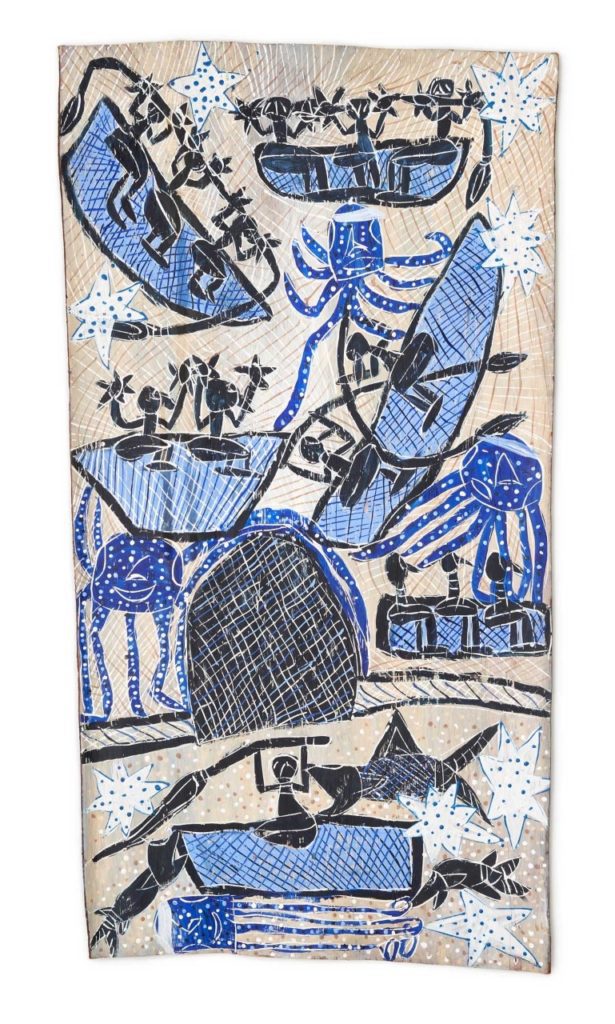
“Ocean,” 2019. Dhambit Munuŋgurr. Courtesy American University Museum.
Philip Guston Now
National Gallery of Art
March 2 to August 27
Although his star does not burn as brightly as many of his contemporaries, such as Pollock, Rothko and de Kooning, Philip Guston (1913–1980) is arguably the quintessential American painter of his generation. His paintings are delicate and crude, hilarious and disturbing, vulgar and sweet, weird and familiar. Charting the 50-year career of one of America’s most influential modern artists, “Philip Guston Now” follows Guston’s epic, winding career as he changes artistic styles, explores abstraction, moves in and out of political involvement and finally arrives at the dark, tragicomic imagery of his late work. The exhibition includes approximately 110 paintings and 115 drawings, with a separate installation on the ground floor of the East Building displaying all 73 drawings from Guston’s “Poor Richard” series, inspired by the life and career of Richard Nixon. Through an entirely novel and unconventional approach that demands to be reckoned with, Philip Guston bridged the personal and the political, the abstract and the figurative, the humorous and the tragic. This is a major retrospective you don’t want to miss.
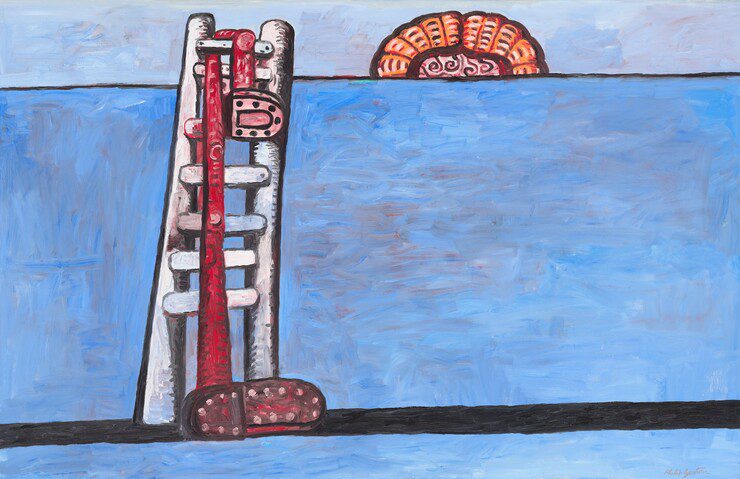
The Ladder, 1978, oil on canvas, National Gallery of Art, Washington, Gift of Edward R. Broida, 2005. © The Estate of Philip Guston. Courtesy NGA.
A Splendid Land: Paintings from Royal Udaipur
National Museum of Asian Art
Through May 14
In the 18th century, the artists of Udaipur — the agonizingly beautiful lake city in Rajasthan, India — shifted their focus from small poetic manuscripts to large-scale paintings of the city’s palaces, lakes, mountains and seasons. They sought to convey the “bhava,” the emotional tenor and sensorial experiences, that make place and time memorable. It was unlike anything else in Indian art. With dazzling paintings on paper and cloth, many on public view for the first time, the exhibition reveals the environmental, political and emotional contexts in which the new genre emerged. “A Splendid Land” explores the unique visual strategies artists developed to communicate emotions, depict places and celebrate water resources. The exhibition is organized as a journey that begins at Udaipur’s center and continues outward: first its lakes and lake palaces, then to the city, onward to the surrounding countryside and finally to the cosmos. A side trip immerses visitors in the emotions surrounding the monsoon, the annual rains crucial to prosperity. Throughout, a soundscape by filmmaker Amit Dutta invites audiences to more fully absorb the moods of these extraordinary places and paintings. Honest truth: this is one of the most beautiful exhibitions I’ve seen in 12 years of Washington-area arts coverage.
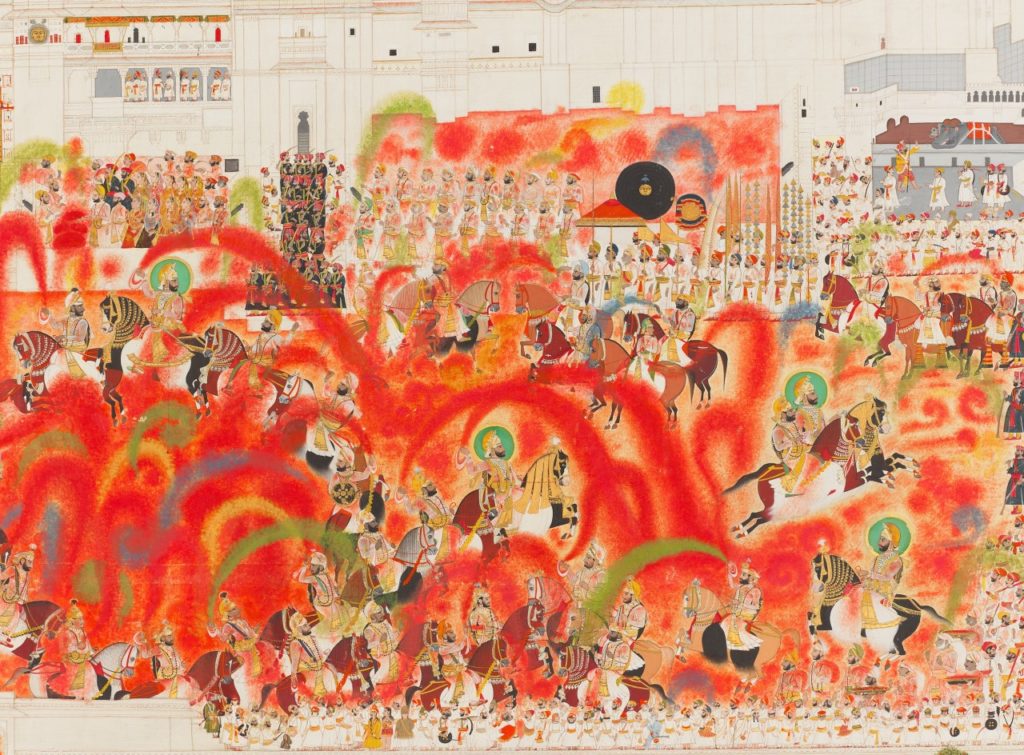
“Maharana Swarup Singh and courtiers playing Holi at the City Palace” (detail), c. 1851. Attributed to Tara. Courtesy National Museum of Asian Art. Courtesy Smithsonian.
1898: U.S. Imperial Visions and Revisions
National Portrait Gallery
Opens April 28
The year 1898 was pivotal for the United States: a year that set the stage for a new global order of American dominance. On the 125th anniversary of the Spanish-American-Cuban-Philippine War, “1898: U.S. Imperial Visions and Revisions” is the first exhibition to examine this important period through the lens of portraiture and visual culture. Multifaceted viewpoints are presented, with portraits of U.S. expansionists placed in dialogue with portraits of those who dissented. With more than 90 artworks from collections in Puerto Rico, the Philippines, Guam, Spain and the United States — including works from military institutions here in Washington — “1898: U.S. Imperial Visions and Revisions” illuminates the complications and consequences of the Spanish-American War (1898), the Congressional Joint Resolution to annex Hawai‘i (July 1898) and the Philippine-American War (1899–1913), which redefined America’s place in the world.
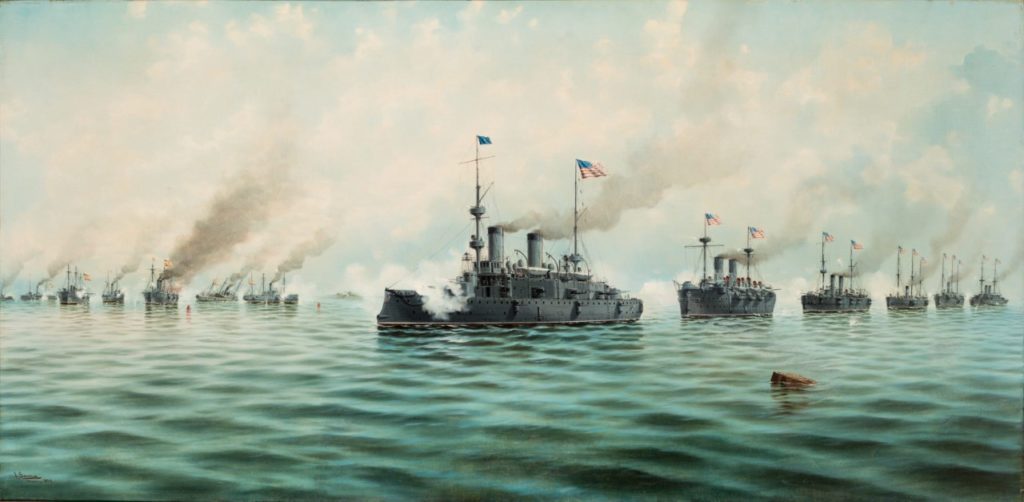
“USS Yankee Cienfuegos 1898,” 1912. Carlton Theodore Chapman. Courtesy National Portrait Gallery.
Afrofuturism: A History of Black Futures
National Museum of African American History and Culture
Opens March 24
Investigating Afrofuturist expression through art, music and activism, this exhibition explores and reveals Afrofuturism’s historic and poignant engagement with African American history and popular culture. From the enslaved looking to the cosmos for freedom, to popular sci-fi stories inspiring Black astronauts, to the musical influence of Sun Ra, OutKast, P-Funk and others, the exhibition covers the broad and impactful spectrum of Afrofuturism. Visitors will view a variety of objects from Afrofuturism pioneers, including “Parable of the Sower” author Octavia Butler’s typewriter; the uniform worn by Nichelle Nichols as the “Star Trek” character Lt. Nyota Uhura; and the spacesuit-inspired costume in which Nona Hendryx performed with Labelle. A highlight is the hero costume from the 2018 film “Black Panther,” worn by the late actor Chadwick Boseman to portray the first superhero of African descent to appear in mainstream American comics. The exhibition also utilizes select objects to elevate stories that speak to Black liberation and social equality, such as Trayvon Martin’s flight suit from Experience Aviation, representing his childhood dream of becoming an astronaut.

“Space is the Place,” 1974. North American Star System Production. Courtesy National Museum of African American History and Culture.
A Window Suddenly Opens: Contemporary Photography in China
Hirshhorn Museum
Through January 7
As the political and cultural chasm between the United States and China grows seemingly greater each day, “A Window Suddenly Opens” is a bracing call to collective humanity and shared experience. A survey of photography made by multigenerational Chinese artists between the 1990s and the 2000s, the exhibition chronicles how Chinese artists independently embraced the immediacy of print, digital photography, recorded performance and video art during an unprecedented cultural shift — away from the priority of the collective to a revived focus on the self. Many of these artists are among the first in contemporary China to engage with this trend that questioned individualism in a rapidly mechanizing environment, responding in and to the moment with candor. This moving and at times chilling exhibition connects us to the emotional experiences of many Chinese citizens of the past 30 years.
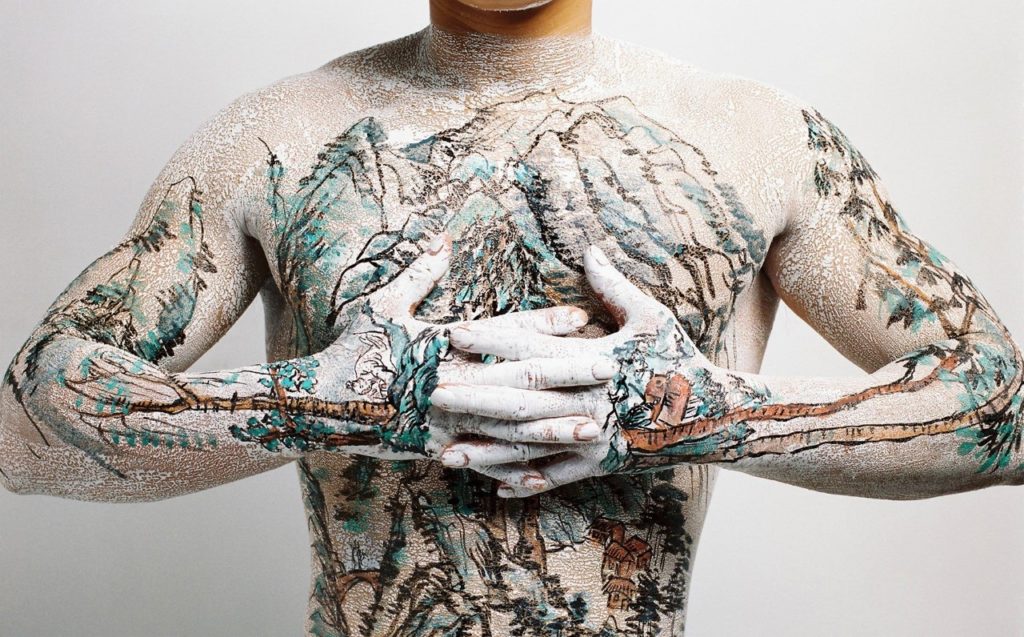
“Chinese Landscape Series No. 3,” 1999. Huang Yan. Courtesy Hirshhorn Museum.

